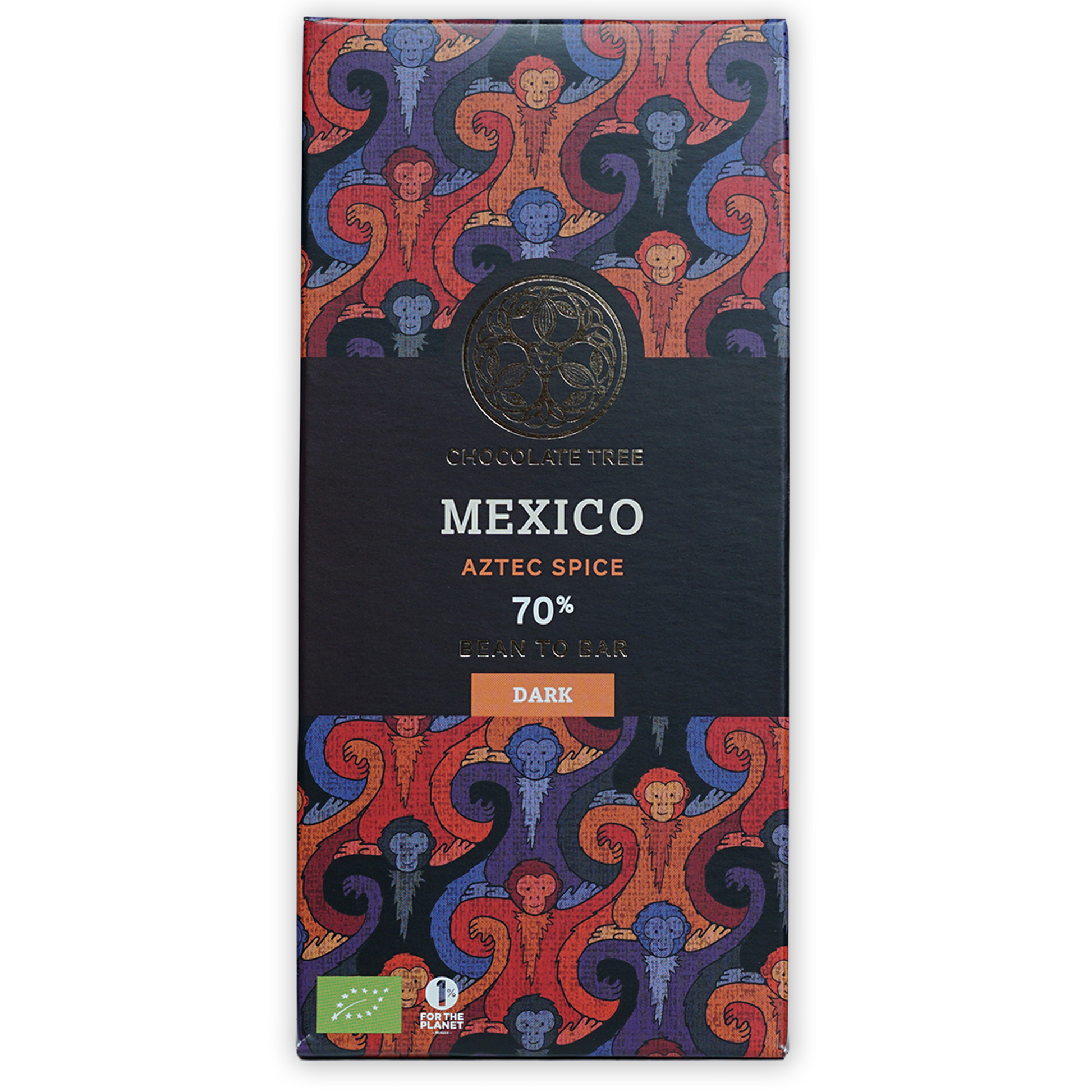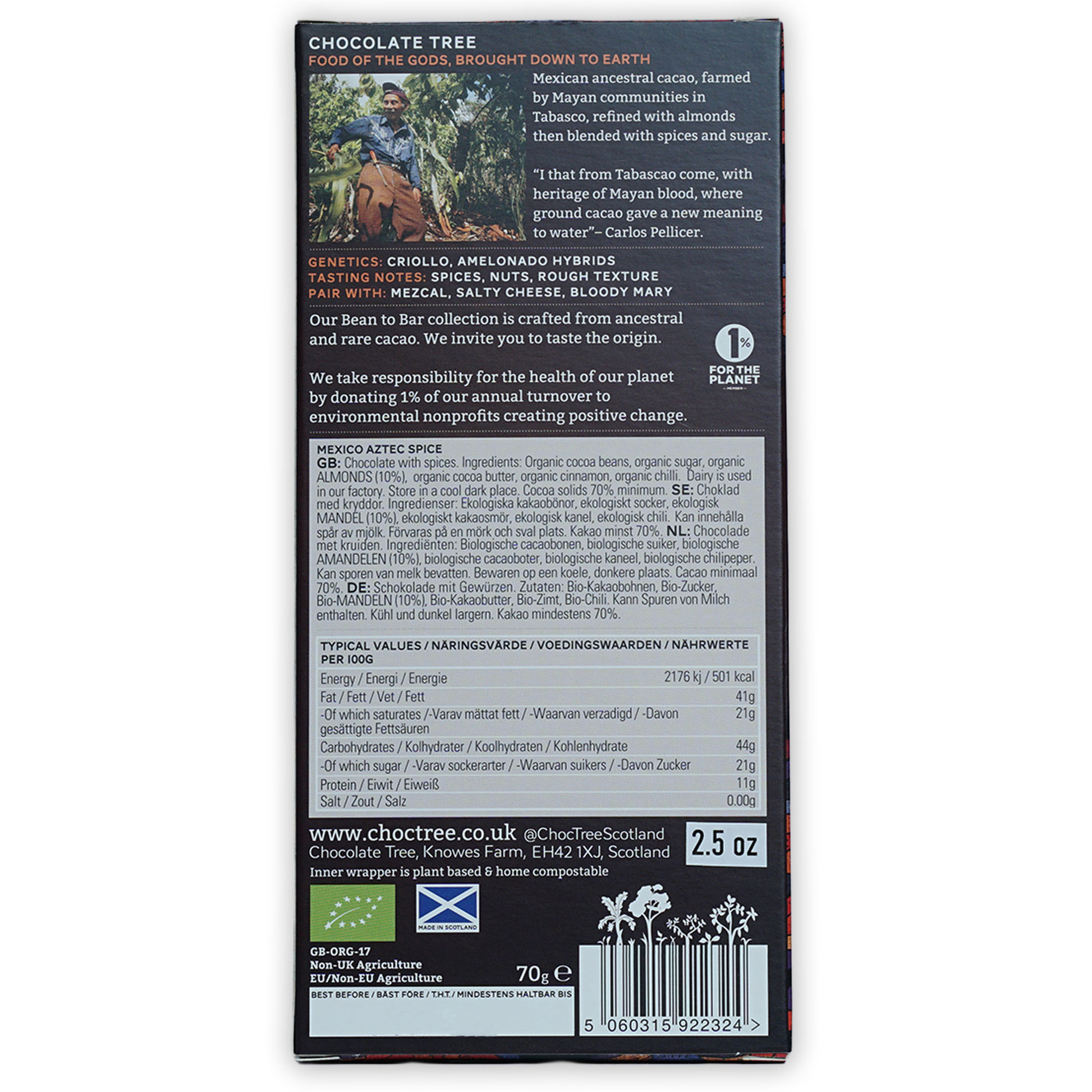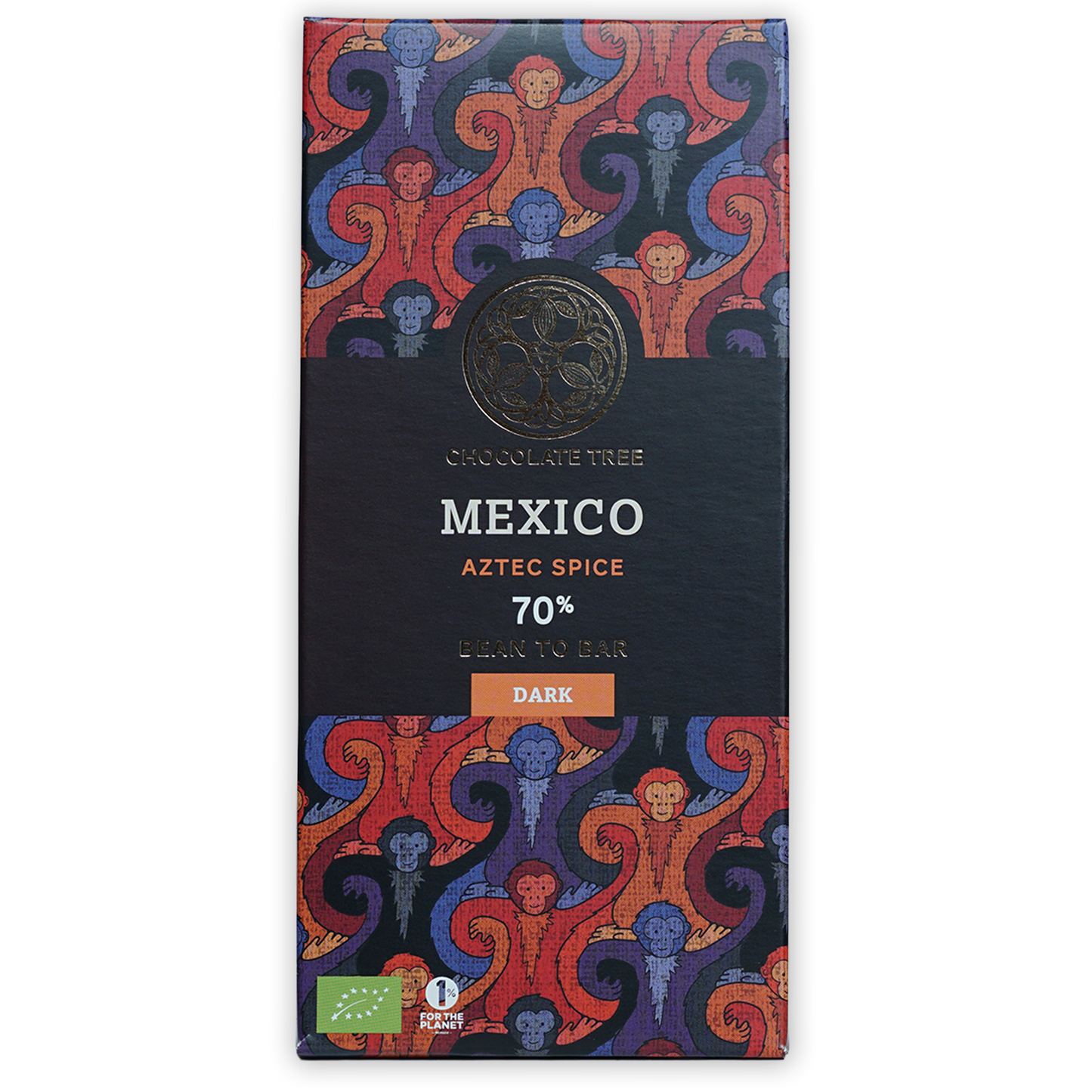

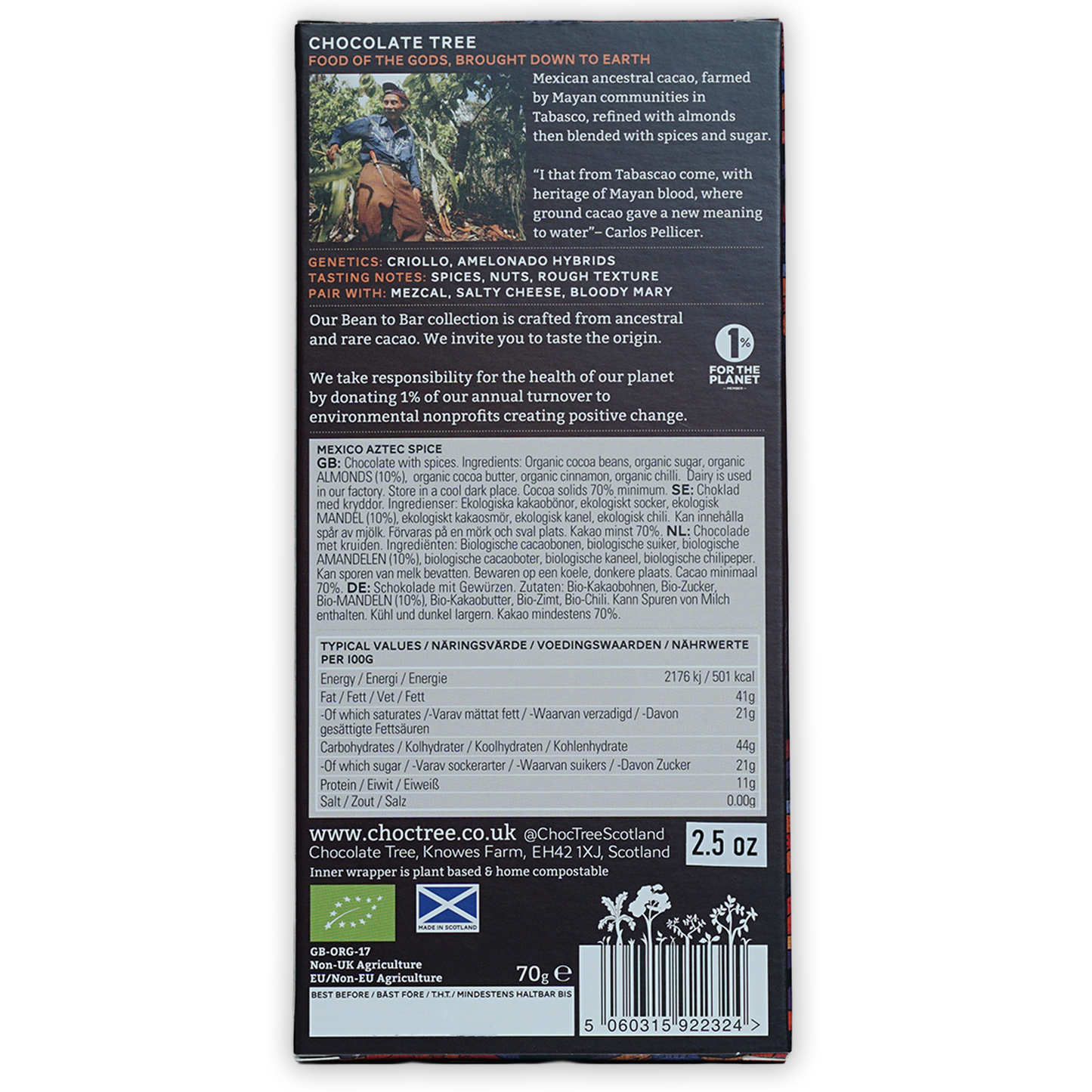
Maker
Chocolate TreeSince 2005, Chocolate Tree has been crafting award-winning organic chocolate with a mission to protect biodiversity and uplift farming communities. From their micro-factory in East Lothian, Scotland, founders Alastair and Friederike Gower work with agro-forested cacao sourced from smallholder farms across South and Central America. Their range spans elegant single-estate origin bars to playful, flavor-packed inclusions—all made with simple, sustainably sourced ingredients. Distinctive tessellation designs on their biodegradable packaging reflect the origins of the cacao itself, capturing the brand’s down-to-earth yet artisanal spirit.
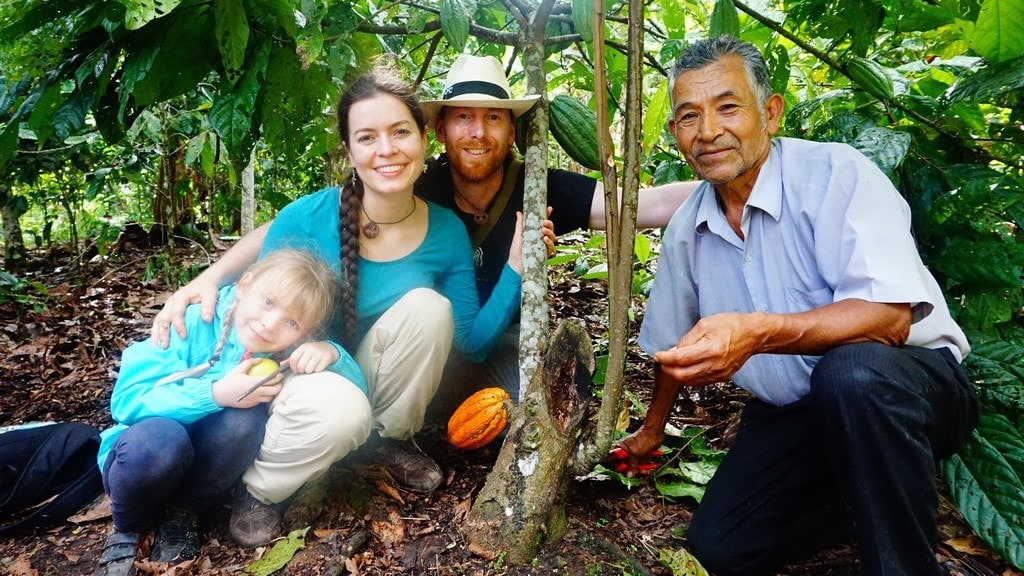
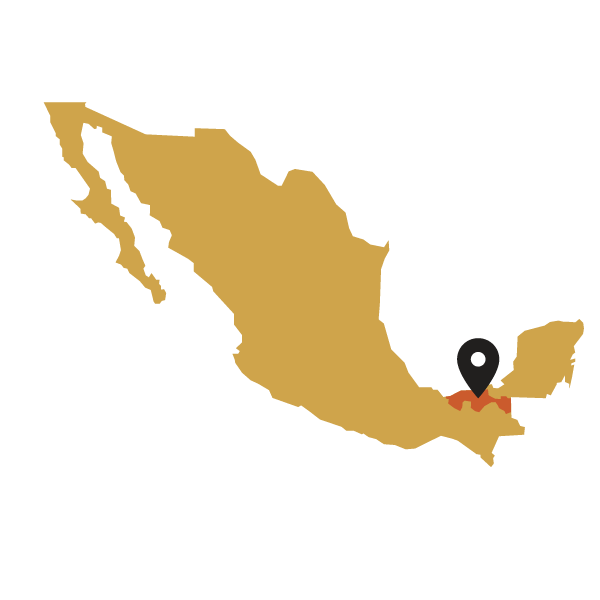
Cacao Region
Tabasco, MexicoThe Mexican state of Tabasco is located in the southeast of the country, bordering the Petén department of Guatemala to the south. Most of the state is covered in rainforest, as well as lots of small lakes, wetland areas, and rivers. While the state's main industry is petroleum extraction & refination, there are several commercially-important crops grown in Tabasco, such as cacao, coconut, oranges, bananas, and sugarcane.
Cacao Strain
AmelonadoAmelonado is one of those ten evolutionarily unique types identified in 2008 using samples collected throughout the Americas over the previous century. This particular cluster type represents a traditional cultivar believed to have been domesticated from the Brazilian Amazon, possibly near what is now called the Para River. It’s now one of the most common cacao cultivars in the world, and often held up as the typical example of a forastero cacao: deeply chocolaty & bitter, with strong earthy undertones and a large, round pod. Most of the cacao brought to Africa in the 18th and 19th centuries originally came from this cultivar type, leading to the Ghanaian varietal now known as the West African Amelonado.
Attention CA Residents
WARNING: This product can expose you to chemicals including lead, which are known to the State of California to cause cancer and birth defects or other reproductive harm. For more information, go to www.p65warnings.ca.gov.

